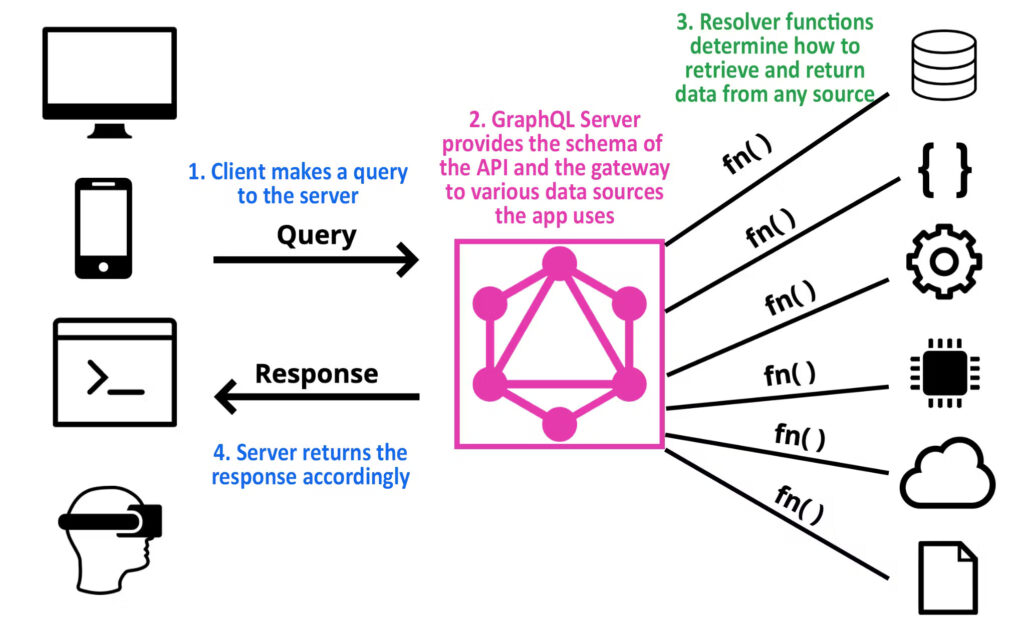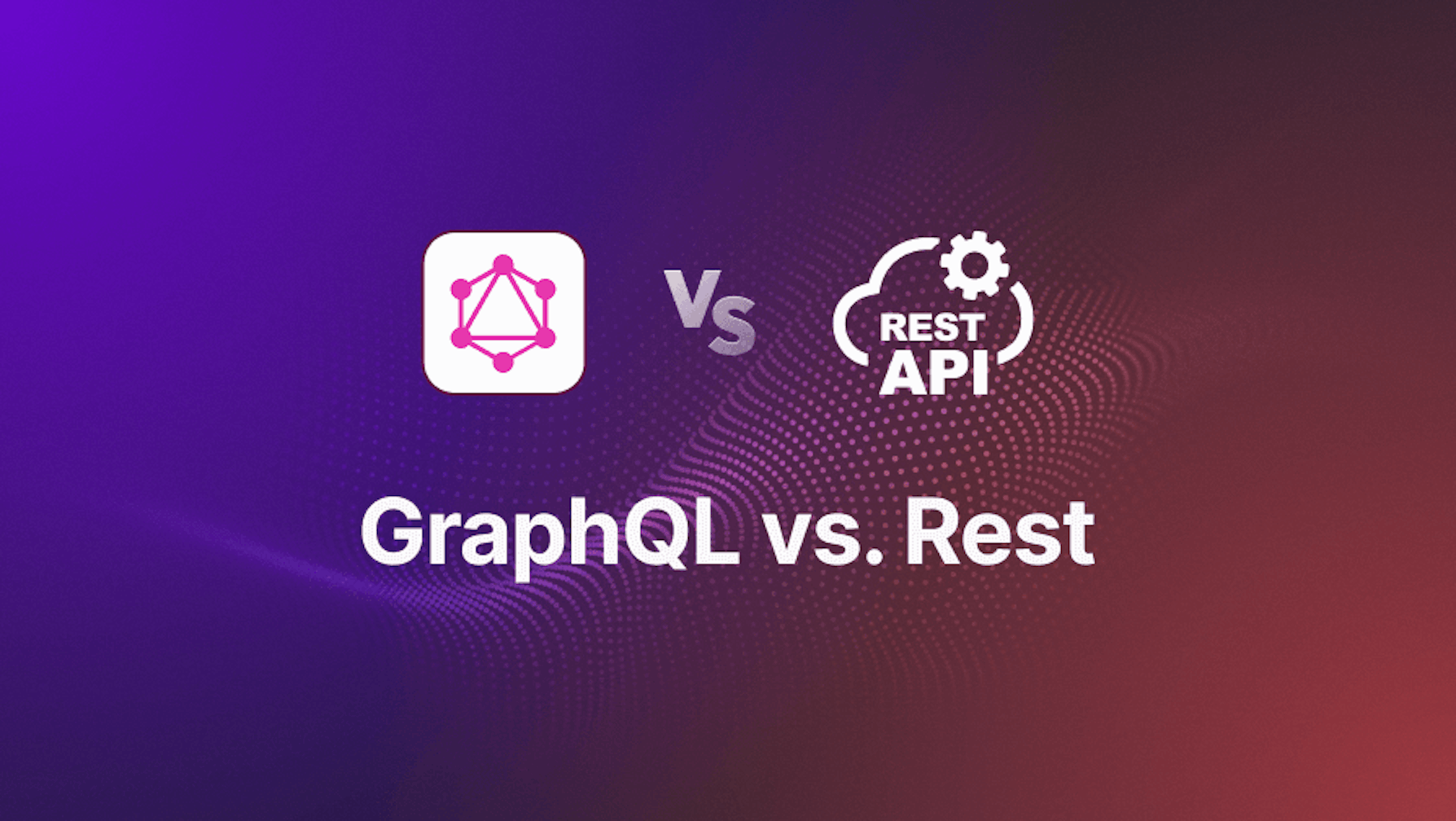As applications grow more sophisticated and data-rich, the demands placed on APIs and data-fetching mechanisms have surged. For many years, REST (Representational State Transfer) has been the dominant approach for building APIs due to its simplicity and scalability. However, REST has its limitations, especially as applications require more complex and tailored data fetching solutions. This has paved the way for GraphQL, a query language developed by Facebook to give developers more control and precision over their data queries.
In this article, we’ll cover what GraphQL is, why it has become a popular alternative to REST, and how it is reshaping the way we design and interact with APIs. If you’re a back-end developer seeking deeper insights, check out this Introduction to GraphQL for Back-End Developers, which delves into essential concepts and the benefits of GraphQL for modern back-end systems.
What is GraphQL?
GraphQL is a query language that allows developers to retrieve data from APIs in a precise and flexible way. Unlike REST, which requires multiple endpoints to retrieve different sets of data, GraphQL uses a single endpoint that can be queried to fetch only the required data fields. This “single endpoint” model can drastically reduce the complexity of client-server interactions, making GraphQL an appealing choice for complex applications.
In essence, GraphQL allows clients (like front-end applications) to structure their requests to obtain only the exact data they need, which reduces the over-fetching and under-fetching issues that REST often encounters. This capability has made GraphQL a go-to solution for many companies, especially those that handle large data sets or offer multiple interfaces, such as web and mobile apps.
Quote: “GraphQL offers developers more flexibility, enabling precise data fetching that results in improved performance and easier API management.”
Key Differences Between REST and GraphQL
Both REST and GraphQL serve the purpose of managing data exchange between client and server, but they operate in fundamentally different ways. Here are some of the critical distinctions:
1. Single Endpoint vs. Multiple Endpoints
In REST, each resource has its own endpoint. For example, a blogging application might have /posts for blog posts, /users for user information, and /comments for comments. To retrieve data from multiple resources, the client must send multiple requests. In contrast, GraphQL has just one endpoint, typically /graphql, through which clients can request all necessary data in a single query, specifying exactly what data is needed.
REST Example:
/users→ Fetches all user information/posts→ Fetches all posts/comments→ Fetches all comments
GraphQL Example:
/graphql→ Fetches user data, posts, and comments in a single, specified query
This difference is particularly helpful when working with complex applications or projects that need to minimize network requests.

2. Data Fetching Efficiency
REST APIs often return fixed data structures, which means they may include fields the client doesn’t need. This leads to over-fetching, where the client receives more data than required, potentially slowing down the app. Alternatively, under-fetching occurs when REST APIs return insufficient data, forcing the client to make additional requests.
GraphQL resolves these inefficiencies by letting the client specify exactly which fields it needs in a request. For example, a GraphQL query can retrieve only the username and email from a user resource without any unnecessary fields, improving both data transfer efficiency and app performance.
3. Flexibility and Customization
GraphQL’s flexibility extends beyond data fetching. By allowing clients to request specific data structures, GraphQL can enhance front-end integration, especially with component-based frameworks like React. This flexibility benefits React’s component-based architecture, allowing developers to structure GraphQL queries in ways that streamline state and prop management across components.
For more on managing components in a seamless way, particularly with technologies like React, check out this article on React State and Props Management for Seamless Component Interaction.
4. Real-Time Data with Subscriptions
REST APIs are typically built for request-response communication. While this model is effective for many applications, it is not ideal for real-time applications that need instant updates (like live chats, gaming, or trading platforms). GraphQL introduces subscriptions, which allow clients to receive real-time updates. This enables data to stream directly from the server to the client as changes occur, making GraphQL a better choice for applications requiring live updates.

5. Versioning
API versioning is a common practice in REST when new versions or improvements are released, often resulting in URLs like /v1/users and /v2/users. GraphQL eliminates the need for versioning by allowing clients to request only the fields they need, making it backward-compatible and reducing the complexity of API updates.
Key Advantages of GraphQL Over REST
Switching to GraphQL can yield substantial benefits for applications, particularly for those with complex data requirements. Below are some of the main advantages:
- Efficient Data Fetching: GraphQL helps reduce over-fetching and under-fetching by allowing clients to specify exact data requirements.
- Enhanced Performance: Fewer network requests and smaller response payloads improve the loading speed of applications, making GraphQL a great choice for high-performance applications.
- Developer Productivity: GraphQL’s single endpoint and flexible query structure mean developers can spend less time managing endpoint logic and more time focusing on delivering functionality.
- Real-Time Capabilities: With subscriptions, GraphQL makes it easy to build real-time applications where data updates dynamically, providing a better user experience for live applications.
For a deeper exploration of performance optimization with GraphQL, consider this Advanced Back-End Concepts guide, which includes insights on maximizing API efficiency in high-demand applications.
When Should You Use GraphQL?
While GraphQL offers several advantages over REST, it may not be necessary or ideal for every application. Below are some cases where GraphQL is particularly beneficial:
- Complex Applications: Apps with large data requirements or those that require a high degree of customization benefit from GraphQL’s flexibility.
- Multiple Client Interfaces: If your application needs to support multiple platforms (e.g., mobile, web, and IoT), GraphQL can simplify data fetching by allowing each platform to specify its data needs.
- Real-Time Data Needs: Apps requiring live data updates, such as chat applications or trading platforms, can benefit from GraphQL’s subscription model.
- Reducing Network Requests: GraphQL is ideal when there’s a need to minimize the number of API requests, as it allows clients to retrieve all needed data in a single request.
Conclusion
REST remains a foundational technology in web development, but GraphQL has emerged as a compelling alternative, especially for applications requiring efficient, flexible, and customizable data-fetching methods. By offering a single endpoint, real-time capabilities, and control over data structure, GraphQL allows developers to build more dynamic, responsive applications that cater to complex client needs. As you consider GraphQL for your own projects, evaluate how its features might enhance your application’s performance and data handling.
For a complete overview of GraphQL, including best practices and deeper implementation insights, refer to this Introduction to GraphQL for Back-End Developers. Embracing GraphQL could be a significant step forward for teams looking to improve both developer productivity and user experience.









